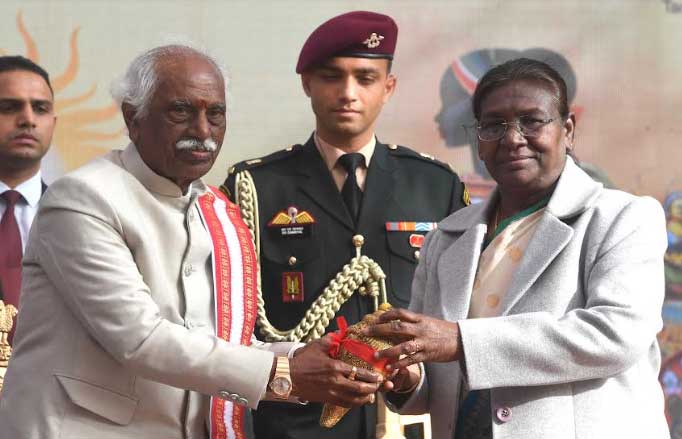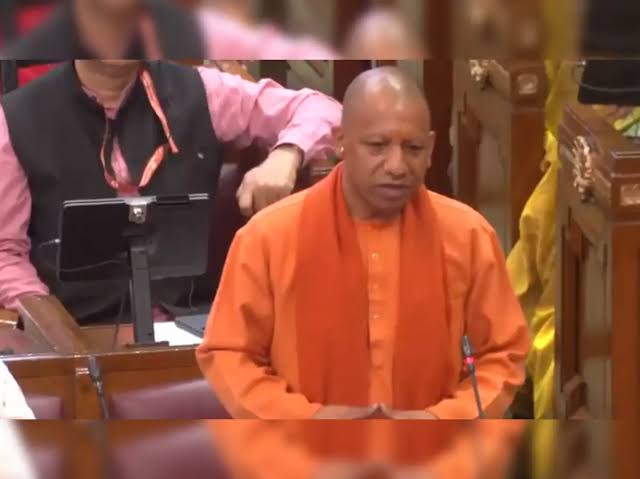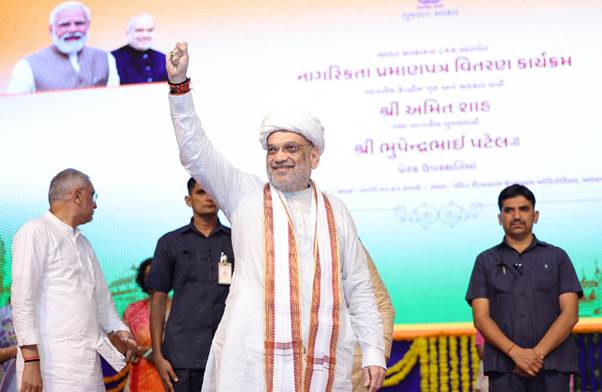The 37th Surajkund International Crafts Mela, inaugurated by President Droupadi Murmu, unfolds like a vibrant tapestry woven with threads of cultural heritage, artistic innovation, and global exchange. Beyond the dazzling display of crafts and the infectious festive spirit, the Mela embodies several significant themes:
 This annual event serves as a vibrant kaleidoscope showcasing the vastness and beauty of Indian art and craft traditions. Each stall whispers stories of age-old practices passed down through generations, representing the cultural richness of different regions and communities. From the intricate embroidery of Gujarat, this year’s partner state, to the handloom masterpieces of the Northeast, the Mela offers a journey through India’s diverse artistic landscape.
This annual event serves as a vibrant kaleidoscope showcasing the vastness and beauty of Indian art and craft traditions. Each stall whispers stories of age-old practices passed down through generations, representing the cultural richness of different regions and communities. From the intricate embroidery of Gujarat, this year’s partner state, to the handloom masterpieces of the Northeast, the Mela offers a journey through India’s diverse artistic landscape.
Art serves as a universal language, transcending the limitations of words and geographical borders. Through their exquisite creations, artisans at the Mela act as creative ambassadors, forging connections between communities and fostering a deeper understanding of shared human experiences. The participation of Tanzania as the partner nation exemplifies this spirit, offering a platform for cultural exchange and highlighting India’s growing engagement with the African continent.
While firmly rooted in tradition, the Mela doesn’t shy away from embracing innovation. Artisans showcase their talent in adapting age-old techniques to contemporary needs, creating unique products that bridge the past and the present. This fusion of tradition and modernity ensures that these art forms remain relevant and vibrant for future generations.
At the heart of the Mela lies a deep appreciation for the artisans who dedicate their lives to preserving and promoting India’s cultural heritage. President Murmu’s words resonated when she commended their skill in breathing life into various materials, transforming them into stunning visual narratives and intricate forms. Recognizing their contribution as both creators and protectors of India’s rich artistic legacy, the Mela serves as a platform to celebrate their talent and dedication.
Witnessing the younger generation of artisans carrying forward these traditions is a source of immense joy. The Mela becomes a space for knowledge and skill transfer, ensuring the continuity of these art forms and the cultural narratives they embody.
While trade and economic opportunities are undoubtedly important aspects of the Mela, its essence lies in its ability to foster cultural exchange, appreciation, and understanding. It creates a space for dialogue, celebrating the inherent beauty and diversity of human expression.
As President Murmu inaugurated the Mela, she ignited a celebration that goes beyond merely showcasing crafts. It’s a vibrant tapestry woven with threads of cultural heritage, artistic innovation, and global exchange, reaffirming the unifying power of art and its ability to bridge cultures and communities.




